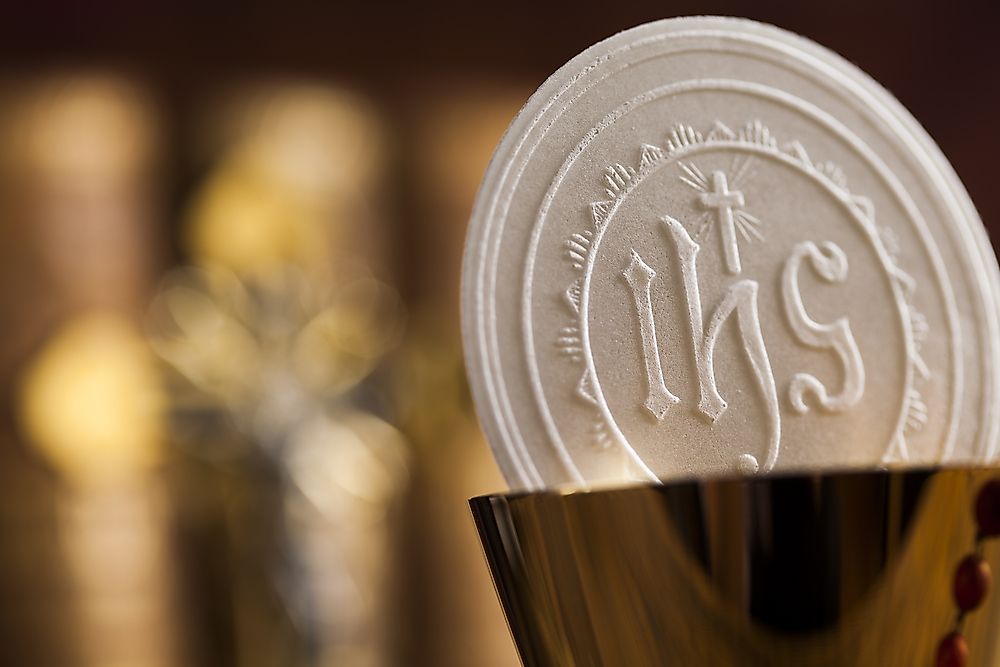What Is Transubstantiation?

Transubstantiation is a doctrine practiced by the Roman Catholic Church of consuming wine and bread during Eucharist, where the two are believed to turn into the blood and body of Jesus Christ respectively. According to the Catholic Church, when taken as the sacrifice of the sacrament, the wine and bread miraculously change in substance to become Christ’s blood and body. The exact process behind the conversion in the form of the bread and wine remains a mystery. The doctrine has been upheld by the Roman Catholic Church for centuries since the term was introduced in the 12th century, and has been embraced by other denominations such as Methodists. However, other newer Christian denominations including the Anglican Church and Lutherans reject the doctrine.
The Roman Catholic Church
Roman Catholic is the oldest extant church in the world and is also the world’s largest. The church’s name “Catholic,” is derived from the Greek word “Katholikos” which translates to “universal,” and it encapsulates the global reach of the Roman Catholic Church. There are more than 1.28 billion followers of the Roman Catholic Church globally. Brazil has the highest Catholic population of any country, with about 0.116 billion Brazilians being Catholics. The church is led by the Pope, who is based in Vatican City; the world’s tiniest state. The Roman Catholic Church has its origins dating back to the 1st century CE by the Apostles, with Saint Peter, a disciple of Jesus Christ being recognized as the Catholic Church’s first Pope.
History
The practice of partaking in the Eucharist is almost as old as the Roman Catholic Church itself, with its origins being dated back to the teachings of the first Apostles. The earliest mention of the Eucharist outside the Bible can be seen in the “Didache” also known as the “Teachings of the Apostles” that states the necessity of being baptized before partaking in the Eucharist. Mentions of the Eucharist can also be seen in other early Christian publications of the 2nd, 3rd, and 4th centuries. However, it was not until the early 12th century that the term “transubstantiation” was introduced. In 1215, the First Council of the Lateran stated that transubstantiation meant that the bread and blood of the Eucharist changed in form “by God’s power” to become the true body and blood of Christ. By the 12th and 13th centuries, the term had widespread use.
The Protestant Opposition
Theologians behind the Protestant Reformation of the 16th century discredited the Roman Catholic Church’s doctrine of transubstantiation. Martin Luther was particularly opposed to transubstantiation and expressed his divergent views on the matter in his numerous publications. In his 1520 “On the Babylonian Captivity of the Church” publication, Martin Luther stated that that transubstantiation did not exist for hundreds of years since the formation of the Church. Martin Luther’s sentiments on transubstantiation were supported by the Church of England, which in 1563 disproved the doctrine, stating that it “cannot be proved by holy writ.” In response, the Roman Catholic Church through the Pope summoned the ecumenical council in the mid-16th century to discuss the growing resistance caused by the Protestant Reformation, and reevaluate any ambiguities in the controversial doctrines including transubstantiation.











